Community health care services like health centres and home care are breaking down barriers to well-being and easing the burden on traditional health care.
by Jessica Wortsman // Photography by Jessica Crandlemire
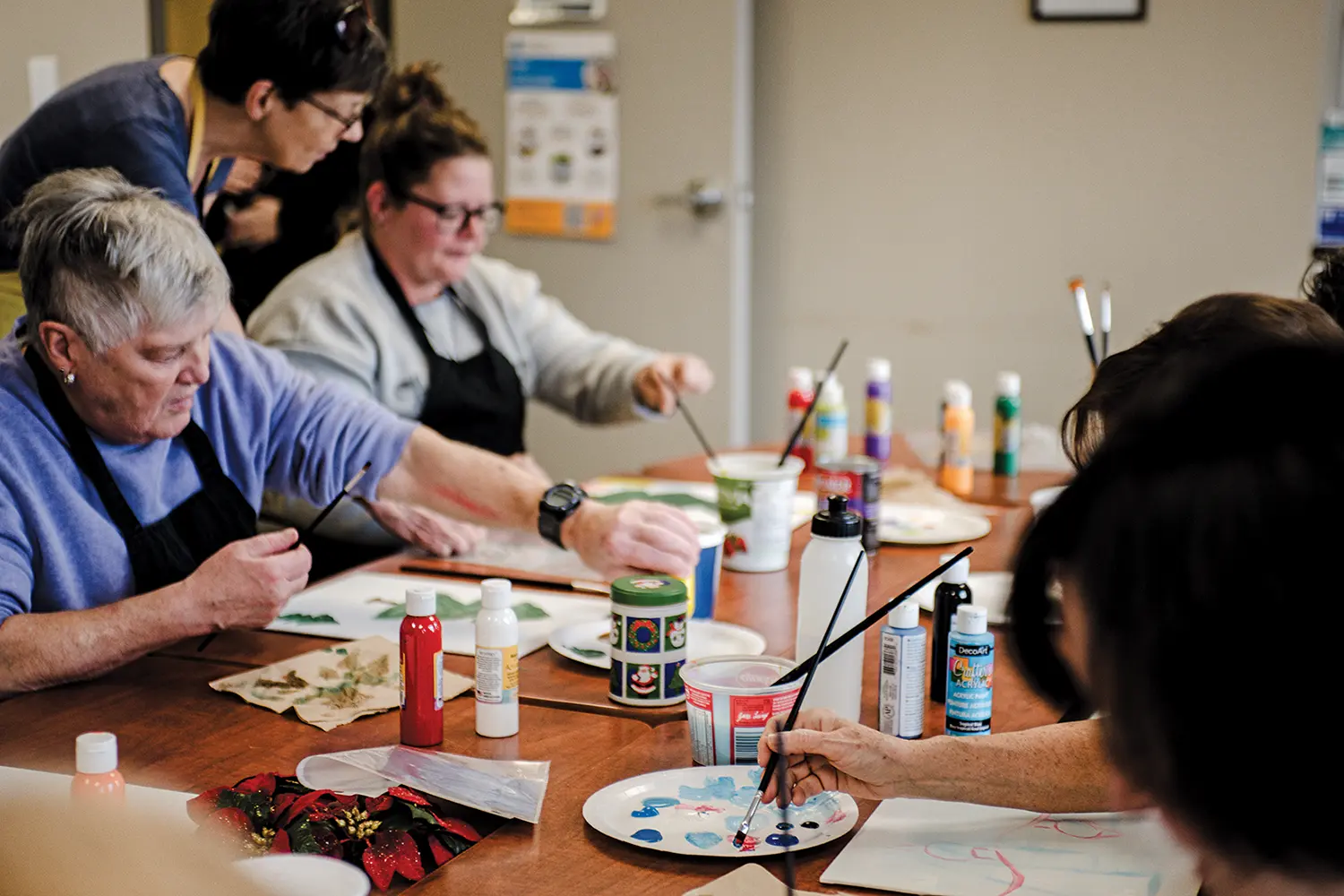

ABOVE: Community members participate in a Learn to Paint workshop run by the South Georgian Bay Community Health Centre.
We often overlook just how vital the everyday things we do—like making ourselves a meal, getting outside for a walk, and meeting up with a friend for a chat—are to our overall health and well-being. But in times like these, when nearly 7,000 Southern Georgian Bay residents lack access to a family doctor and rates of chronic illness and mental health conditions are on the rise, we might need the reminder—good health and well-being depend on more than just treating sickness.
This principle is at the core of many key health and social services in our community. Two of these community services especially—community health care centres and home care—show that well-being goes beyond our traditional view of health care. Yet these services are often underrecognized and underfunded, despite their critical role in relieving the burden on the health-care system.
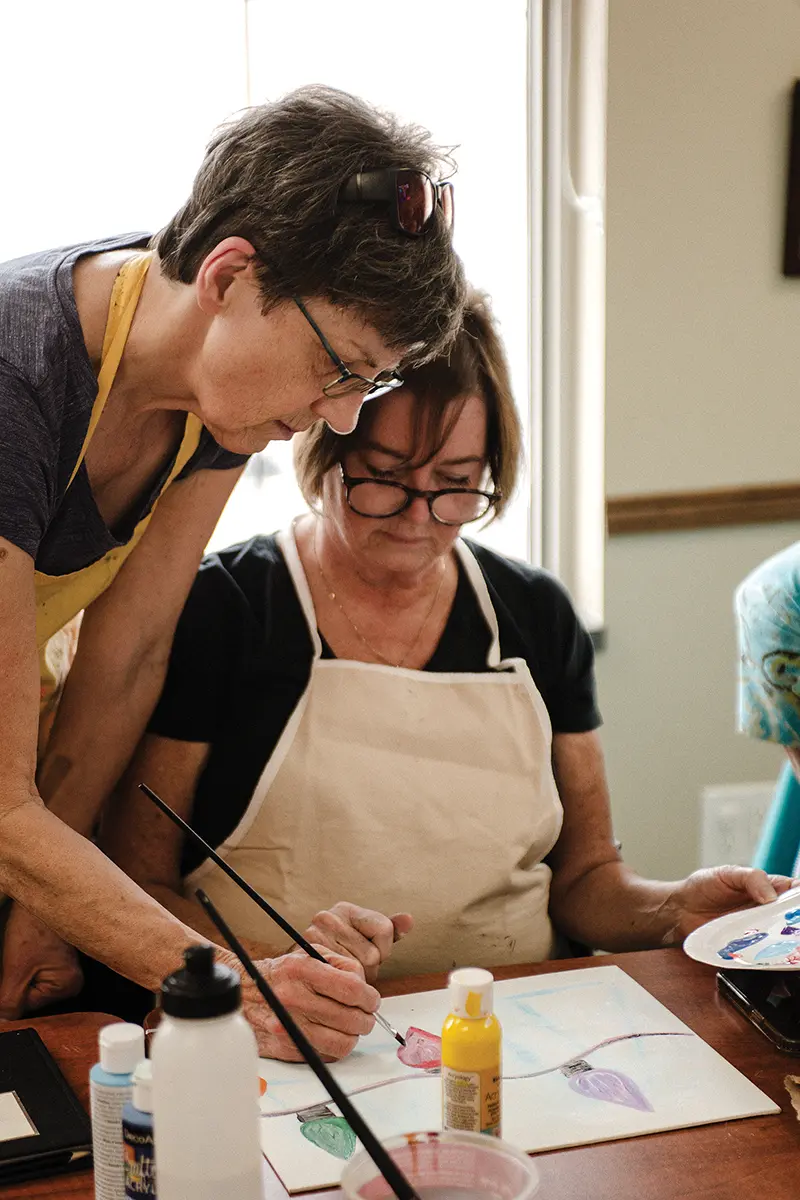
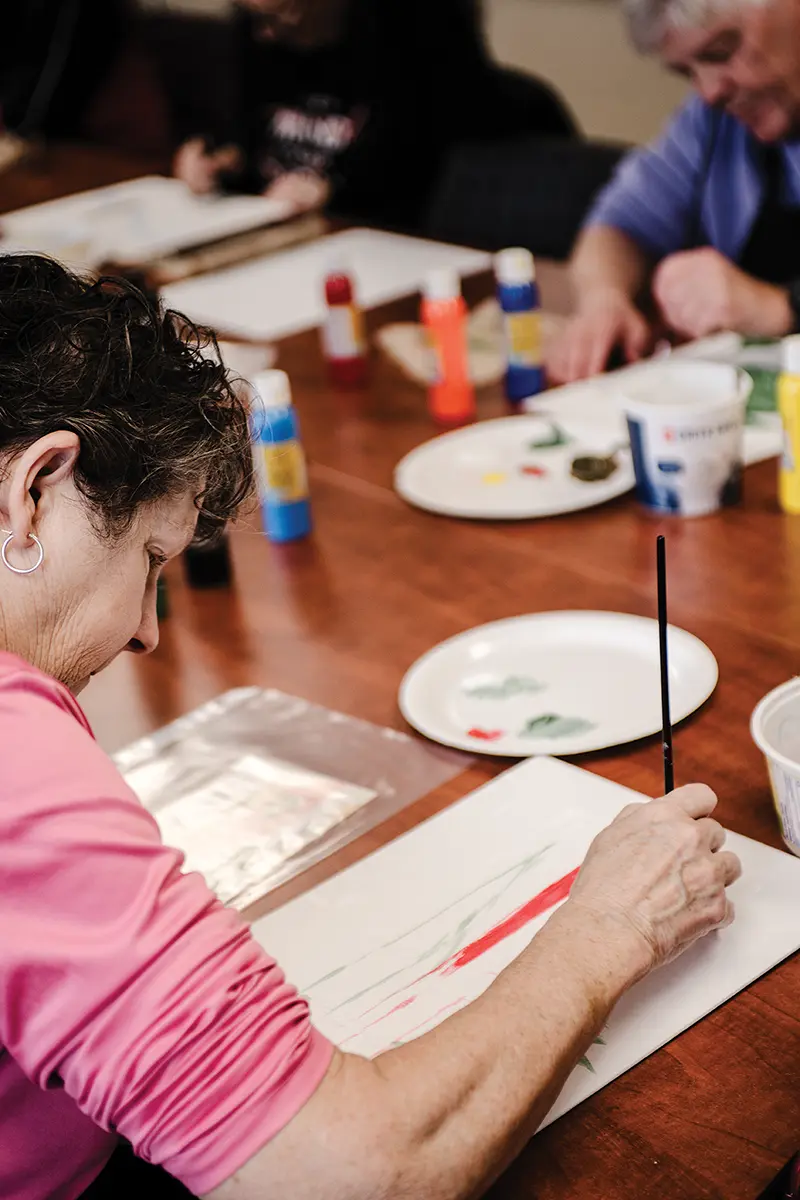
The community health centre model
Ontario’s community health centres (CHCs) take a proactive approach to health by promoting health and preventing illness. These non-profit, community-governed agencies work as part of a province-wide network, one that includes the South Georgian Bay Community Health Centre (SGBCHC) in Wasaga Beach. The CHCs’ work also helps ease the strain on the overburdened health-care system by empowering people with the knowledge, support and skills to stay healthy—and out of the hospital.
Executive director Heather Klein Gebbinck has been at the helm of the SGBCHC for the past nine years, and while the organization seems to fly under the radar, its impact on the community is significant. She describes what the centre does as threefold. First, it provides primary health care to the most vulnerable in the community, like those facing poverty, addiction, disability or isolation. Working in a team-based model, the SGBCHC houses its medical practitioners under the same roof as its allied health staff, which includes social workers, a dietician and a smoking-cessation counsellor, among others. This setup eliminates referral wait time and promotes holistic health. Second, the centre collaborates with community partners on initiatives and advocacy work aimed at tackling local issues. Last, and the facet of the work that Klein Gebbinck hopes to highlight as it has the greatest reach, is the centre’s community programming, which addresses key factors to well-being, like social connection, physical activity and education.
The SGBCHC’s programs are incredibly varied and, best of all, they are completely free to participants. There are active groups that walk, hike and snowshoe, creative workshops that teach candle-making and painting, as well as educational classes on budgeting, meal preparation and chronic illness management. And this is just a sampling.
“Part of our role is trying to improve the community and the development of the community,” says Klein Gebbinck, who notes that each CHC creates, develops and runs programs that serve the specific needs of its own community.
Volunteers are the backbone of these programs, playing a vital role in both running and shaping them. Klein Gebbinck encourages more people to come and volunteer, especially anyone with specific skills to share.
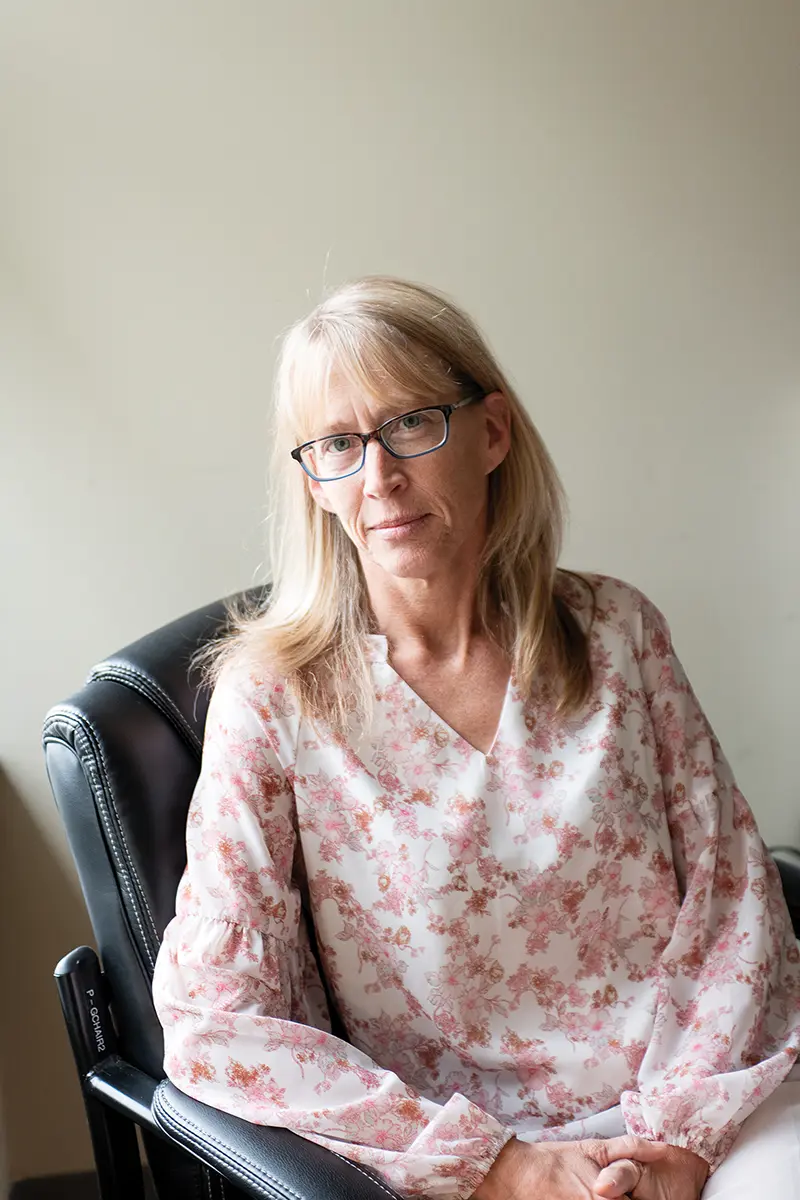
“Part of our role is trying to improve the community and the development of the community.”
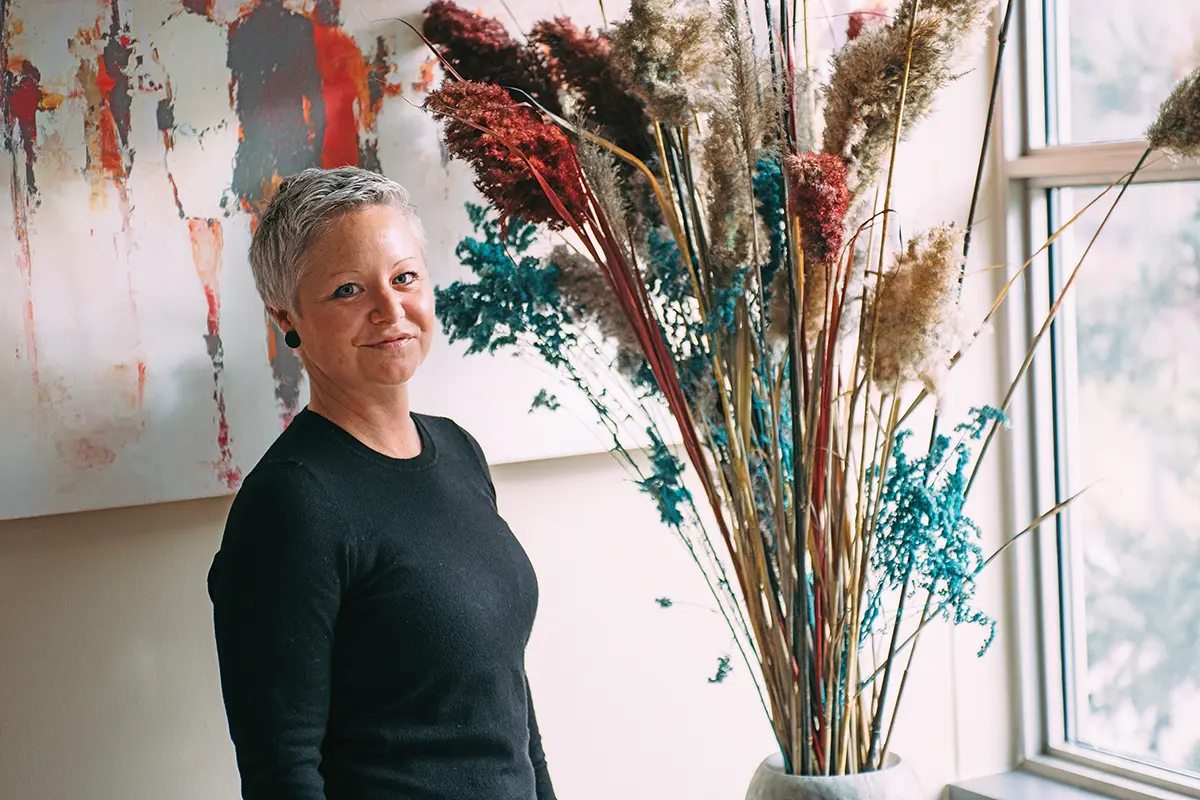
Lauren Jeffrey coordinates the South Georgian Bay Community Health Centre’s many free programs, from outdoor activities to creative workshops and educational classes.
“It allows people to volunteer and give back in an area that they’re passionate about,” she says. “It’s not a huge time commitment but it has an impact on your community.”
When Delphine (who prefers not to share her last name) moved to Canada from Singapore in 2021, she found herself at loose ends while waiting for her permanent residency. The classically trained pianist admits she felt a little lost without the ability to work or study. So, looking for a way to fill her days, she began volunteering with the SGBCHC’s active outdoor groups.
She says it’s afforded her the opportunity to try new things, like snowshoeing—a wildly unfamiliar experience for a Singaporean, she says with a laugh—and perhaps more importantly as a visible minority newcomer, to connect with her new community and local culture. “I think volunteering is a really good way to give back,” she says.
Delphine has since gone back to school to study medicine and says her volunteer work with the SGBCHC programs “helped her look at health care from a more holistic lens,” and that being in nature, exercising and spending time with others is such a simple, low-cost way to ease anxiety and depression and increase overall well-being.
While the community programs at the SGBCHC are all designed to teach skills and encourage physical activity, perhaps their most important role is fostering social connection, which is one of the social determinants of health, says Klein Gebbinck. Anxiety, depression and even cognitive decline have all been linked to social isolation, which also impacts physical health. People are more likely to exercise when they have someone to do it with. If we learned anything from living through the pandemic, it is our fundamental need for in-person connection. This social fabric is the crux of what makes the SGBCHC’s community programming so transformative.
It’s hard to imagine Lauren Boyce as anything but gregarious, but she admits she was shy and found it hard to meet people when she first moved to Collingwood six years ago. That changed in part through her eventual connection to the SGBCHC as a primary health-care patient, and her discovery of their community programs.
She first joined the walking group and then took the leap to their snowshoeing program. She’d snowshoed once but hadn’t been able to go again because of mobility challenges that kept her from buckling her snowshoes on her own. Being incredibly active and independent, she was hesitant to ask anyone for help. So, her snowshoes collected dust in her closet.
“I love snowshoeing now!” Boyce exclaims. Her enthusiasm extends to the entire SGBCHC community, which she says has encouraged her to push beyond her comfort zone to learn new things and also helped expand her social connections.
Boyce urges others to take advantage of the SGBCHCs community programs, because they’re free and a fantastic way to meet other people and learn new skills.
“I feel a sense of belonging when I go there. It’s a community, honestly. Everybody’s working together to make life better for you.”
Getting help at home
For some, going out to join a group or class just isn’t an option. Illness, disability, or the natural challenges of aging can mean many people rely on home care to help them maintain health, well-being and independence. Home-care support and services are also crucial to the more than 80 percent of Canadians who want to age at home.
Home-care services in Ontario are funded through the Ontario Health Insurance Plan (OHIP) and arranged through Ontario Health atHome. Anyone can request an assessment, and if deemed eligible, a care plan is developed, and the individual is connected to the services they need. Those services range from nursing care and personal support to occupational therapy and nutrition counselling, among others. For many, this help is life-changing, enabling them to continue living well and independently, even once daily tasks become a challenge, like cooking a meal, cleaning the house, or getting in and out of bed.
In our region, notes Nancy Esson, office owner and community relations for Right at Home Georgian Triangle and the Muskoka Regions, where an active lifestyle keeps many seniors physically capable for longer, the greatest need is often simple—companionship. “They just want someone to be there to talk to them.”
However, the reality of the home-care system in Ontario is far from reassuring. It is struggling to keep pace with demand. About 900,000 Ontarians per year receive home-care services, but that number is set to surge. By 2040, Ontario’s population over the age of 80 is expected to more than double, placing unprecedented pressure on an already fragile system.
At the same time, the workforce that sustains home care—personal support workers (PSWs), nurses, and other caregivers—continues to dwindle. Workers often face low wages, inconsistent schedules and burnout. What’s more, according to a recent joint report by 10 provincial community health organizations, including the Alliance for Healthier Communities, there is a $2 billion wage gap between Ontario’s home and community health-care workers and their hospital-based counterparts, making recruitment and retention increasingly difficult.

Snowshoeing participant Lauren Boyce says the community health centre’s programs are a great way to meet other people and learn new skills.
“I feel a sense of belonging when I go there. It’s a community, honestly. Everybody’s working together to make life better for you.”
Getting help at home
For some, going out to join a group or class just isn’t an option. Illness, disability, or the natural challenges of aging can mean many people rely on home care to help them maintain health, well-being and independence. Home-care support and services are also crucial to the more than 80 percent of Canadians who want to age at home.
Home-care services in Ontario are funded through the Ontario Health Insurance Plan (OHIP) and arranged through Ontario Health atHome. Anyone can request an assessment, and if deemed eligible, a care plan is developed, and the individual is connected to the services they need. Those services range from nursing care and personal support to occupational therapy and nutrition counselling, among others. For many, this help is life-changing, enabling them to continue living well and independently, even once daily tasks become a challenge, like cooking a meal, cleaning the house, or getting in and out of bed.
In our region, notes Nancy Esson, office owner and community relations for Right at Home Georgian Triangle and the Muskoka Regions, where an active lifestyle keeps many seniors physically capable for longer, the greatest need is often simple—companionship. “They just want someone to be there to talk to them.”
However, the reality of the home-care system in Ontario is far from reassuring. It is struggling to keep pace with demand. About 900,000 Ontarians per year receive home-care services, but that number is set to surge. By 2040, Ontario’s population over the age of 80 is expected to more than double, placing unprecedented pressure on an already fragile system.
At the same time, the workforce that sustains home care—personal support workers (PSWs), nurses, and other caregivers—continues to dwindle. Workers often face low wages, inconsistent schedules and burnout. What’s more, according to a recent joint report by 10 provincial community health organizations, including the Alliance for Healthier Communities, there is a $2 billion wage gap between Ontario’s home and community health-care workers and their hospital-based counterparts, making recruitment and retention increasingly difficult.
For those in need, this can translate into long wait times, unmet needs, and inconsistency of care and caregiver, which can be particularly upsetting for tasks that are deeply personal, like bathing and dressing. The truth, explains Esson, is that being approved for services does not guarantee service fulfillment. There simply aren’t enough home-care workers to meet demand.
As a result, families who can afford it are increasingly turning to family-funded care to supplement government-provided services. This can ensure more consistent, customized and timely help. Esson suggests considering long-term care insurance to help with costs. Aging at home requires thoughtful planning, she says. While people may be living longer than ever, the need for care is inevitable, and it’s often the unexpected, like falls, illness or disease, that leave people unprepared for the physical and financial realities of home care.
Increased funding for community health and home-care services is essential to providing diverse and ample support to help people live longer, better and independently. The province has pledged to boost home-care funding in the coming years—a decision that’s as practical as it is compassionate because home care is far more cost-effective than emergency room visits or long-term care. Investing in it now could relieve pressure on hospitals and preserve critical health-care resources for the future.
Community Programs and Services
South Georgian Bay Community Health Centre
southgeorgianbaychc.ca
Community Connection/211
communityconnection.ca
South Georgian Bay Ontario Health Team
southgeorgianbayoht.ca
Older Adult Activity Calendar
southgeorgianbayoht.ca/connecting-older-adults
Collingwood Public Library Programs Calendar
collingwoodpubliclibrary.ca/what-s-happening/programs
Wasaga Beach Public Library Programs Calendar
wasagabeachpubliclibrary.ca/programs/
Breaking Down Barriers – Independent Living Resource Centre
breakingdownbarriers.ca
Home-Care Services
Right at Home Canada
rightathomecanada.com/georgian-triangle
Good Comfort
goodcomfort.ca









